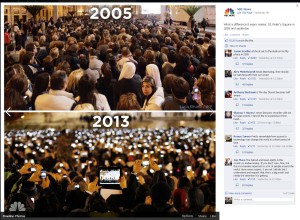I’ve been on the receiving end of a handful of cold emails lately, and I haven’t come close to answer any of them. But on the flip side of things, I’ve been sending a bunch of cold emails lately, and the majority have not only received responses, they’ve led to in-person meetings.
So what makes a good cold email?
There certainly isn’t a set formula, but whether you are reaching out to a prospect, pitching a reporter on a story, or just asking someone you don’t know to meet for a coffee, there are a few things you can do to give yourself the best chance of getting a response.
Subject Line
The subject line is the single most important line in your entire email. Emails with subject lines like “Coffee?” or “Meet Up?” won’t stand out in a crowded inbox. The subject line needs to be relevant, valuable and super clear. For example, if you are looking for advice/networking with someone you don’t know:
- “Advice for a fellow Product Marketer?”
- “Chat biz dev with a fellow BC alum?”
Additionally, one of the best ways to get someone’s attention is to put the person’s name in the subject line. This approach has been super effective for me with one-to-one communications. For example:
- “Chris – source for your article on Facebook IPO”
- “Karen – quick chat about integration opp?”
Be clear why you are reaching out to them
Adam Grant, a professor at Wharton and author of Give and Take, talks about how when people feel they have nothing unique to contribute, they feel very little responsibility to help.
So when writing a cold email, don’t just make it clear why you are reaching out – make it clear why you are reaching out to them. What made you email this person specifically?
A good email, according to Grant, “highlights what drew you to this person and the distinctive value that he or she can add. (Devote) a sentence or two to what you know about the person’s work, and how it has influence your life.”
Show you did your homework
Showing that you did your homework isn’t just important because you need to be relevant, but it shows that you put some time and effort into reaching out. As Scott Britton points out, this is one of the best ways to prove that your email isn’t just another canned message from a JV sales rep or a PR hack.
Keep it short, sweet and to the point
We don’t need another article by someone in the tech community telling us about how much email they get (here, here, here, and here to name a few) to know that everyone is busy and their inbox is stuffed. Keep your email short, sweet and to the point. Would you read a five paragraph essay from someone you’ve never talked to before? The best way to keep things short: write like a human. Talk to them like you would if you were out at a bar, or waiting in line to get coffee.
